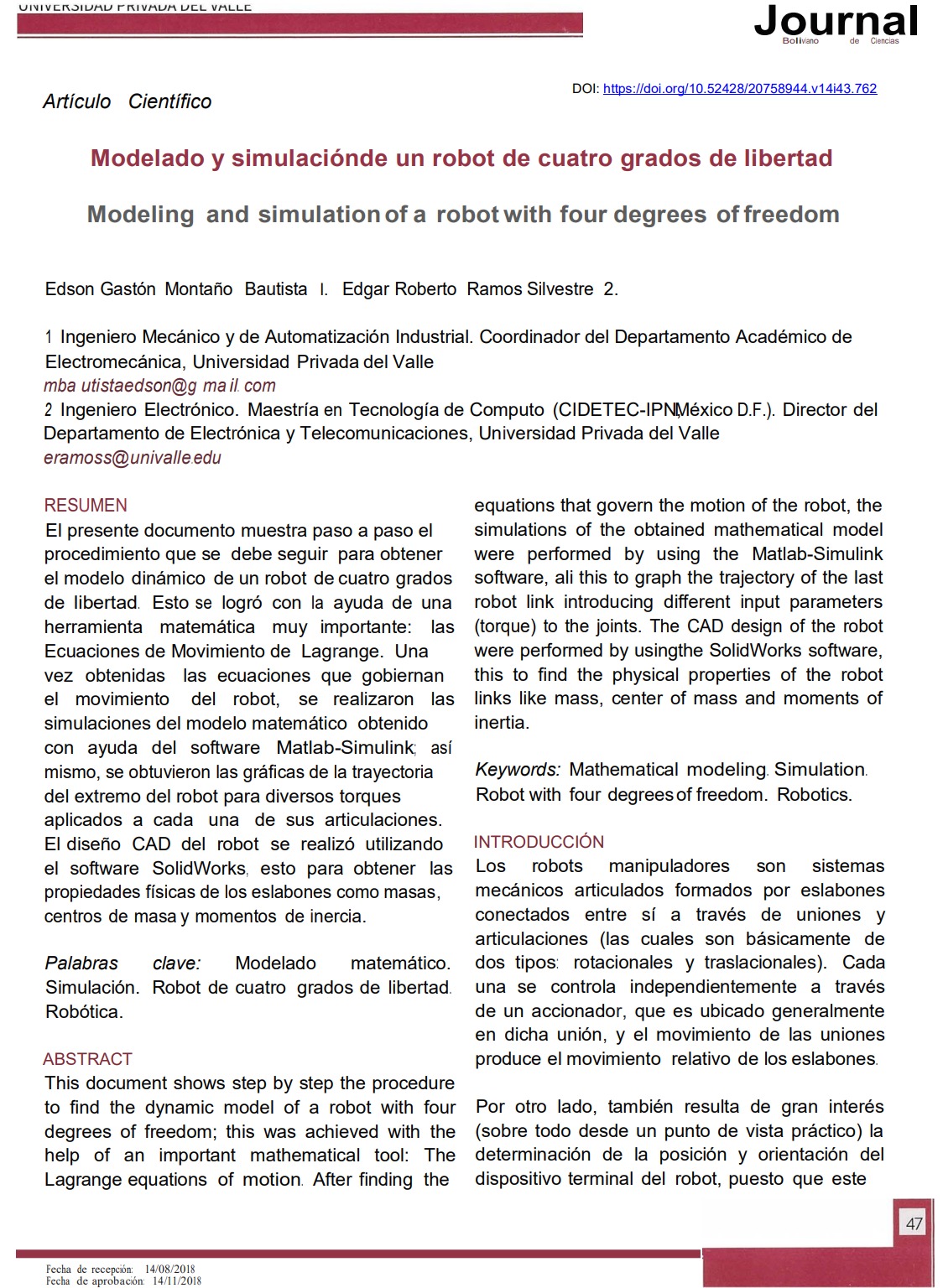Modeling and Simulation of a Robot with Four Degrees of Freedom
DOI:
https://doi.org/10.52428/20758944.v14i43.762Keywords:
Mathematical Modeling, Simulation, Robot with Four Degrees of Freedom, RoboticsAbstract
This document shows step by step the procedure to find the dynamic model of a robot with four degrees of freedom; this was achieved with the help of an important mathematical tool: The Lagrange equations of motion. After finding the equations that govern the motion of the robot, the simulations of the obtained mathematical model were performed by using the Matlab-Simulink software, ali this to graph the trajectory of the last robot link introducing different input parameters (torque) to the joints. The CAD design of the robot were performed by usingthe SolidWorks software, this to find the physical properties of the robot links like mass, center of mass and moments of inertia.
Downloads
References
Gray, M. A. (s.f.). lntroduction to the Simulation of Dynamics Using Simulink. Boca Raton, Florida: Chapman & Hall/CRC Computational Science.
Kelly, R. y Víctor, S. (2003). Control de Movimiento de Robots Manipuladores. Madrid, España: Pearson Educación.
Nuruzzaman, M. (2005). Modeling and Simulation in Simulink far Engineers and Scientists. Indiana, EE. UU.: AuthorHouse. Bibliografía consultada
Perutka, K. (2011). MATLAB for Engineers-Applications in Control, Electrical Engineering, 1Tand Robotics. Rijeka, Croatia: lnTech. https://doi.org/10.5772/1533
Systemes, D. (2018). Novedades·Solidworks 2018. Massachusetts: SolidWorks Corporation.

Downloads
Published
How to Cite
Issue
Section
License
Copyright (c) 2018 Edson Gastón Montaño Bautista y Edgar Roberto Ramos Silvestre

This work is licensed under a Creative Commons Attribution 4.0 International License.
Authors who publish with this journal agree to the following terms:
- Authors retain copyright and grant the journal right of first publication with the work simultaneously licensed under a Creative Commons Attribution License 4.0 that allows others to share the work with an acknowledgement of the work's authorship and initial publication in this journal.
- Authors are able to enter into separate, additional contractual arrangements for the non-exclusive distribution of the journal's published version of the work (e.g., post it to an institutional repository or publish it in a book), with an acknowledgement of its initial publication in this journal.
- Authors are permitted and encouraged to post their work online (e.g., in institutional repositories or on their website) prior to and during the submission process, as it can lead to productive exchanges, as well as earlier and greater citation of published work.














